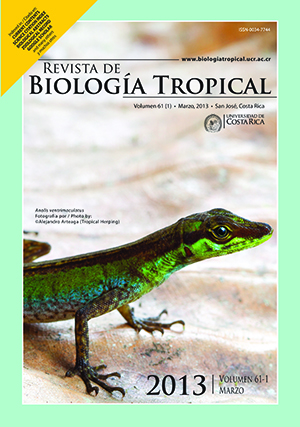Resumen
En India los ambientes de agua dulce están experimentando una grave amenaza para la biodiversidad; ante esto es urgente investigar técnicas alternativas que promuevan la biodiversidad y manejo de los peces. El presente estudio se realizó con el objetivo de evaluar la biodiversidad de los peces dentro y fuera del área protegida del río Gerua, India, para evaluar si el área protegida provee beneficios a la biodiversidad de los peces fluviales. Para evaluar el patrón de diversidad de los peces de agua dulce y las condiciones físico-químicas se estudió el río entre abril 2000 y marzo 2004. Se realizó una comparación en un tramo de 15km de un área protegida (Santuario de Vida Silvestre Katerniaghat) y un tramo sin protección de 85km aguas abajo. En cada sitio se obtuvieron algunas variables fisicoquímicas, los peces fueron capturados con varias artes de pesca y se describió la diversidad por sitio. Nuestros resultados mostraron que la temperatura del agua es mayor como resultado de la temporada de pre-monzón (25ºC) y menor durante el invierno (14-15ºC), la turbidez varía considerablemente según la temporada. En el área protegida, se recolectaron un total de 87 especies pertenecientes a ocho órdenes, 22 familias y 52 géneros, mientras que un máximo de 59 especies pertenecientes a seis órdenes, 20 familias y 42 géneros se registraron en las áreas no protegidas. El género más abundante pertenece a los Ciprínidos y Salmostoma bacaila fue la especie más abundante en el área del santuario. Otras especies numerosas fueron: Eutropiichthys vacha, Notopterus notopterus, Clupisoma garúa y Bagarius bagarius. Los resultados indicaron más especies, mayores abundancias, individuos más grandes y mayor número de peces con categoría de peligro de extinción dentro del área del santuario cuando se compara con la zona no protegida. El análisis de la abundancia promedio de peces en peligro de extinción y vulnerables de las áreas evaluadas en el santuario frente a las desprotegidos indicó diferencias significativas (p<0.05). Los resultados mostraron que esta área protegida ribereña podría ser importante para la conservación y manejo de la diversidad de los peces en la región, especialmente para los residentes y las especies amenazadas.##plugins.facebook.comentarios##
Descargas
Los datos de descargas todavía no están disponibles.


